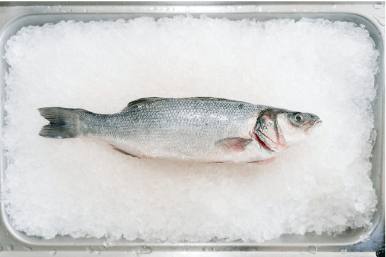
Kratom, a tropical tree indigenous to Southeast Asia, is renowned for its distinctive leaves, which have been used for centuries by local populations. There’s a palette of vein colors in kratom leaves, including red, green, and white. Within this spectrum lies Yellow Vein Kratom, a variety that stands out due to its unique processing and alkaloid profile. Yellow Vein Kratom isn’t the result of a distinct vein color within the kratom leaves but rather a product of specific drying and fermentation processes that alter the effects of the leaf. Today, modern users continue to explore the benefits of Yellow Vein Kratom, especially as it increases in popularity worldwide.
The Production Process of Yellow Vein Kratom
Yellow Vein Kratom, a distinct variety of the Mitragyna speciosa plant, undergoes a unique production process that sets it apart from more common green, red, and white vein varieties. The Kratom plant’s leaves are carefully harvested at their optimal maturity, not for the yellow color of their veins, but for a specialized drying process that results in their distinctive hue and effects. This secret process is a combination of sun-drying and other methods, passed down among generations of farmers. Once sorted and dried, the leaves acquire a yellowish tint, hence the name Yellow Vein Kratom. Producers may also mix different strains or modify the fermentation process to achieve the desired color and chemical composition. The fermentation process can alter the concentration of certain alkaloids, contributing to the unique properties and potential benefits Yellow Vein Kratom is sought after for. Finally, the fermented leaves are finely ground into a powder, which is the most common form in which Kratom is sold.
The Fermentation Process
Fermentation significantly enhances Yellow Vein Kratom’s attributes through biochemical changes. It’s not a simple drying process but a careful procedure that adjusts various environmental factors. Traditional techniques involve packing leaves in bags for natural fermentation, but modern practices favor controlled environments for consistent high-quality kratom. Factors like temperature, humidity, and fermentation time affect the final product’s potency. Though both ancient and modern methods strive for element balance, contemporary methods’ precision allows for more successful, replicable kratom batches, catering to increased demand for quality.
Drying Techniques
Choosing between indoor and outdoor drying methods depends on several factors, including space availability, climate conditions, and specific product requirements. Indoor drying offers more control over the environment, including temperature, humidity, and cleanliness, thus reducing the risk of contamination. It typically ensures a consistent quality but can be more costly due to energy use and the need for specialized equipment. Outdoor drying, on the other hand, leverages the natural heat of the sun and the circulation of air, which can be a more energy-efficient and cost-effective option. However, it is subject to weather variability and may increase the risk of uneven drying or exposure to pollutants. The role of sunlight in outdoor drying is particularly significant; it can induce the development of a yellow hue in certain products, such as teas and some fruits, which can be a desirable trait. Conversely, shade drying is preferable when trying to preserve the original color and prevent the bleaching effect of direct sunlight. Each method comes with its own set of advantages and disadvantages, making it vital to consider the specific needs of the product when selecting the appropriate drying technique.
Grinding and Packaging
The creation process of kratom products is a harmonious transition from the leaf-drying stage to the critical grinding phase. When leaves have reached the desired dryness, they are transformed into a fine powder through grinding, a sensitive step that influences the product’s final texture and potency. This uniform consistency of the powder is crucial for user-friendliness and user experience, maintained by manufacturers’ use of high-tech grinders with razor-sharp blades that crush the leaves evenly. Following grinding, the attention switches to packaging, a step vital for preserving kratom’s freshness and strength. The grind is rapidly moved into sealed, airtight vessels or pouches, often harnessing unique materials to shield against elements like UV light, moisture, and air exposure, which can impair the product’s quality. To avoid cross-contamination and to offer the purest form to the consumer, this packaging is performed in germ-free zones. Additionally, manufacturers may incorporate oxygen absorbers or desiccants into the packaging to enhance shelf life and uphold the quality of the kratom powder.
Quality Control and Safety Measures
One critical aspect of quality control is the prevention of contamination during production. Contamination can occur at many stages of manufacturing—from the sourcing of raw materials to the handling and packaging of final products—and it can lead to a wide range of problems, from product recalls to health hazards for consumers. Therefore, stringent measures must be put in place to prevent any form of pollutants or impurities from tainting products, as their presence could compromise both safety and effectiveness.
To uphold the integrity of production, companies must implement and rigorously enforce safety protocols and standard operating procedures (SOPs). Lab testing plays a role in maintaining product quality. Specifically, testing for alkaloid levels is essential in products that contain these naturally occurring compounds. Testing also helps verify that the finished products are free of contaminants such as heavy metals, pesticides, and pathogens. Together, these procedures create a multi-layered defense against potential quality and safety breaches.
Upon exploring the art and science that underpin the creation of Yellow Vein Kratom, one must appreciate the expertise required to master this process. Producers must possess a deep knowledge of the strain’s peculiarities and the conditions necessary to yield the perfect batch. As demand for Yellow Vein Kratom grows, so does the discussion about the future of its production. Indeed, the future of Yellow Vein Kratom not only hinges on the consistent quality of the product but also on the industry’s ability to with environmental consciousness. As such, the continued success of this kratom variety will likely depend on a delicate synergy between tradition, innovation, and responsibility.








